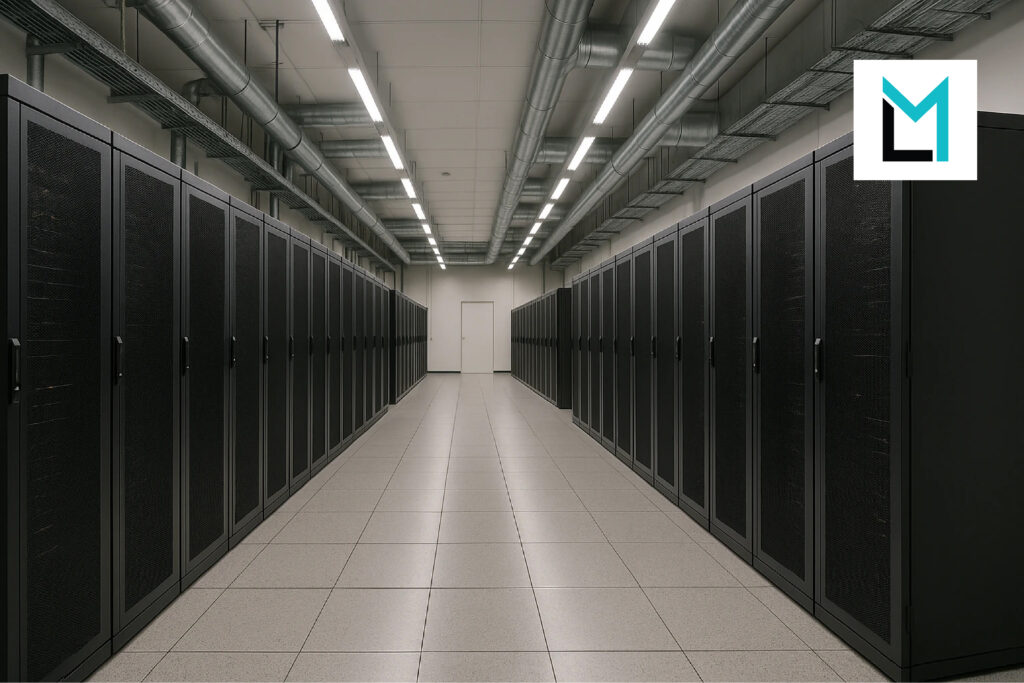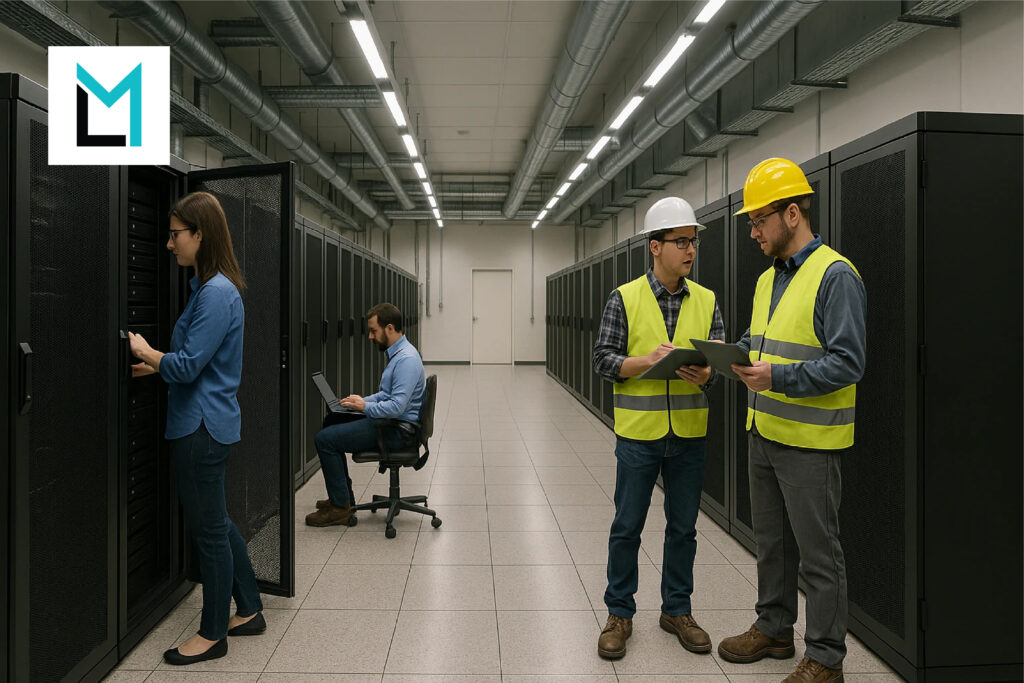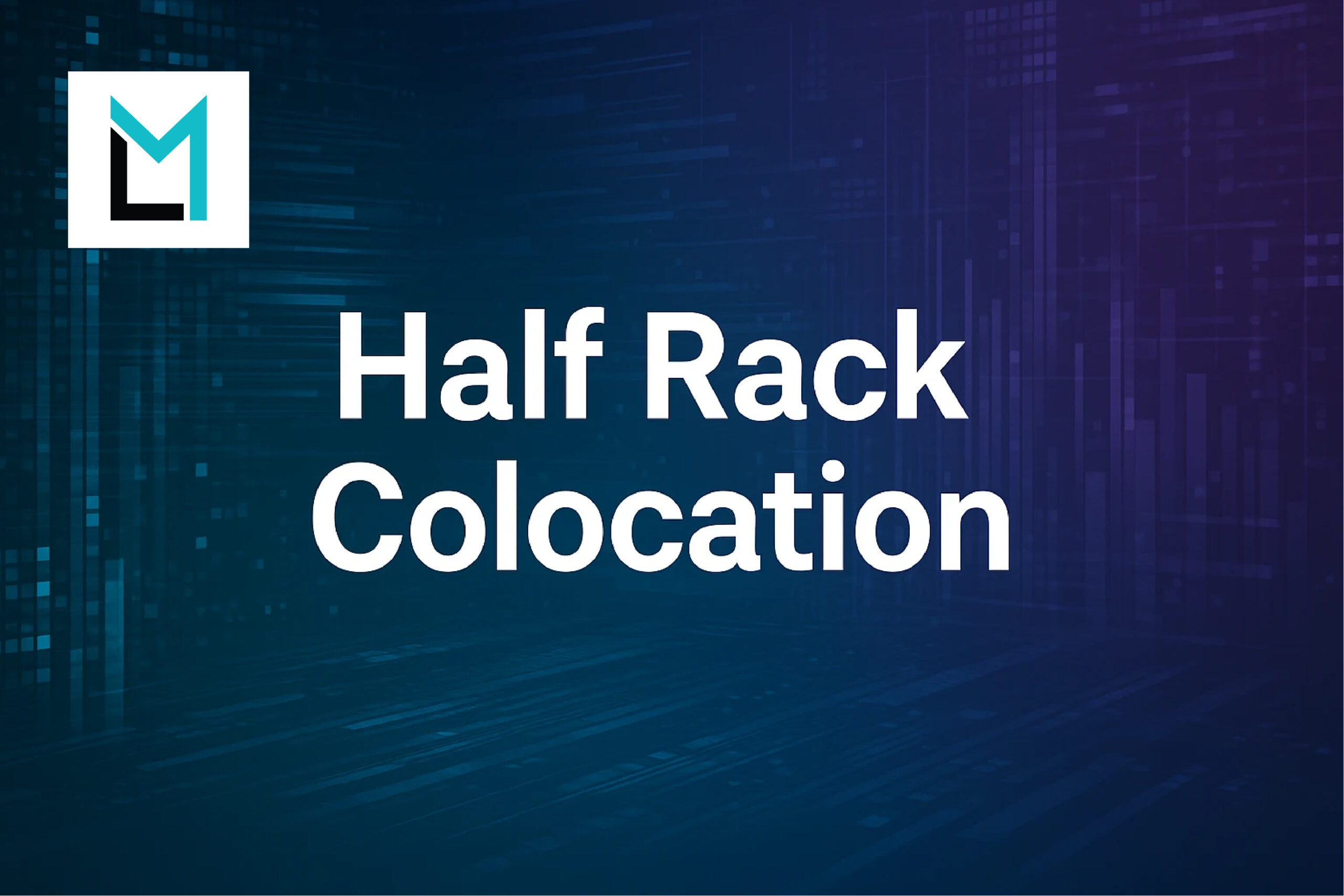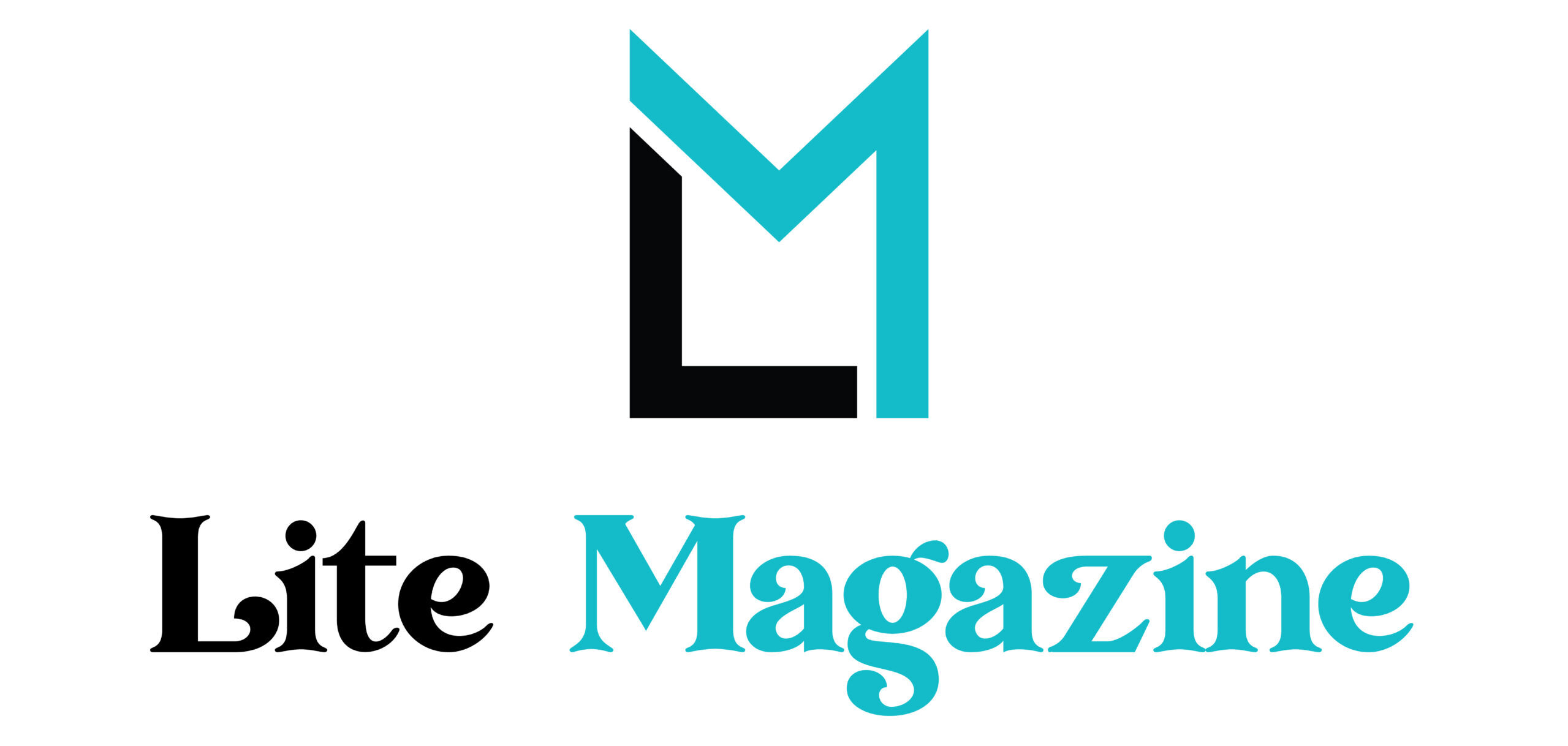Today, almost every company depends on the stability of its IT infrastructure. Server performance directly affects the operation of internal systems, web projects, client platforms, and analytics services. However, businesses increasingly face limitations — budgets do not grow as fast as the demand for performance and reliability.
Against this backdrop, half rack colocation has become both a strategic and cost-efficient solution. It allows companies to access enterprise-grade infrastructure — with redundancy, security, and carrier-level connectivity — without the high expenses typically associated with renting a full rack or maintaining a private server room.
Many growing businesses — especially SaaS providers, MSPs, IT outsourcing companies, and e-commerce platforms — now choose the half rack format. It offers the perfect growth point: enough space and resources to scale, without paying for unused capacity. Unlike cloud services, where costs can fluctuate monthly and hardware control is limited, colocation provides predictable expenses and full management — from hardware selection to security policies.
What is half rack colocation
Half rack colocation means renting half of a standard server cabinet (typically 20–22U out of 42U or 48U) in a professional data center. In this setup, a company places its own equipment — servers, storage systems, and networking devices — in a dedicated and secure space with power, cooling, and Internet connectivity provided.
Essentially, it’s a partial deployment of infrastructure in a data center, giving the client all the benefits of enterprise-grade hosting without paying for a full rack if it’s not needed.
Key features of half rack colocation
- Physical space. Half a rack offers about 20–22 rack units — enough for 5–10 mid-sized servers, a couple of switches, and supporting equipment.
- Power and cooling. The service usually includes a defined power allocation (for example, 2–4 kW) with A+B redundancy. Cooling systems ensure stable operation even under high load.
- Network and connectivity. Clients get access to high-speed, low-latency connections and can choose preferred carriers. Most data centers offer multiple uplinks for redundancy.
- Security and access. Half racks often come with individual locks that ensure physical isolation from other tenants. Access is granted only to authorized personnel, and the facility is protected 24/7.
- On-site support. Many providers include remote hands services — technical help such as rebooting servers, replacing cables, or checking indicators — especially valuable for remote teams.
Why companies choose half racks
Half rack colocation is ideal for companies that have outgrown virtual hosting or cloud instances but are not yet ready for a full rack. It allows them to:
• test their infrastructure in a professional data center environment without major investment;
• consolidate several office servers in one stable and secure location;
• scale gradually, with the option to upgrade to a full rack later;
• optimize costs while maintaining full control over hardware.
Discover More: Crew Disquantified Org: An In-Depth Exploration of a Unique Organizational Model
Key benefits of half rack colocation
A half rack in a data center offers a way to build a stable, enterprise-grade infrastructure while maintaining control and financial predictability. Below are the main advantages that make this format especially appealing for growing companies.
1. Cost optimization without sacrificing quality
The main reason companies choose half rack colocation is the ability to use exactly as many resources as needed. If your equipment occupies only half a rack, there’s no reason to pay for the entire one. The cost of rent, power, and network connectivity is proportional to the space used, while the client still gains access to the same engineering infrastructure — redundant power systems, climate control, fire protection, and physical access control. This approach helps keep operational expenses under control, especially at a stage when the infrastructure has not yet reached industrial scale.
2. Predictable budgeting
Unlike cloud solutions, where monthly costs may fluctuate depending on traffic, peak loads, and additional services, colocation follows a fixed pricing model. Renting a half rack includes a defined amount of power, bandwidth, and support services, allowing companies to accurately forecast expenses months or even years in advance. For financial directors, this is a significant advantage: infrastructure budgets can be planned without the risk of unexpected overspending.
3. Control and independence
Colocation means full ownership of your equipment. Unlike cloud platforms, where access is limited by APIs and virtual consoles, colocation allows you to choose your own hardware configuration, operating systems, monitoring tools, and security policies. Moreover, the company retains physical control of its servers, can perform upgrades, and manage access independently. This is especially important for organizations working with sensitive data or those that must comply with strict internal security standards.
4. Reliability and performance
Professional data centers provide a level of resilience that cannot be achieved in office-based server rooms. Redundant power chains, N+1 backup schemes, multi-layer cooling systems, and carrier diversity ensure high availability levels of 99.9–99.99%. For businesses, this means stable operation, no downtime, and minimal risk of data loss. Thanks to high-speed connections and low latency, half rack colocation is suitable not only for corporate systems but also for SaaS platforms, online services, and high-load media applications.
5. Security and compliance
Hosting servers in a professional data center ensures multi-level protection — physical, network, and operational. Video surveillance systems, biometric access control, fire suppression, and continuous temperature monitoring create a stable and secure environment for equipment. Many facilities are certified under international standards such as ISO 27001, PCI DSS, and SOC 2, which is particularly important for companies handling financial, personal, or healthcare data.
6. Scalability without migration
Half rack colocation is a flexible solution. As a company grows, it can seamlessly upgrade to a full rack or even a dedicated cage within the same data center. This scaling process doesn’t require redeploying infrastructure, minimizing risks and downtime. Ultimately, a half rack in a data center is an optimal model for companies with steady growth — combining predictability, security, and control with the flexibility to evolve into larger infrastructure solutions without sudden cost spikes.
When half rack colocation is more cost-effective than other solutions

Choosing the right infrastructure is a strategic decision that affects the stability of services, scalability, and the company’s financial resilience. Half rack colocation is not always the best option, but in several scenarios, it confidently outperforms both cloud solutions and full racks, as well as in-office equipment hosting. Let’s look at the main options and compare them by key criteria.
Half rack vs. cloud solutions
Cloud platforms are convenient for getting started: fast deployment, no need to purchase hardware, and flexible scalability. However, as a company grows, these advantages often turn into drawbacks. Monthly bills become unpredictable, and dependence on the provider increases. In addition, control over infrastructure is limited — it’s impossible to install custom hardware, manage physical-level security, or optimize power efficiency.
Half rack colocation offers the opposite:
- fixed and predictable costs;
- full ownership and control of your hardware;
- long-term cost optimization;
- no vendor lock-in or dependency on a single provider’s platform.
For companies with stable traffic volumes and a clear understanding of their resource needs, migrating from the cloud to colocation can often reduce total cost of ownership (TCO) by 20–40% over several years.
Half rack vs. full rack
A full rack is ideal for large infrastructures — dozens of servers, storage systems, dedicated routers, and private subnets. However, if your equipment doesn’t fill the entire rack, the overpayment can be significant: you end up paying for unused space, power, and cooling.
Half rack colocation solves this issue. It’s the perfect choice for companies running 5–10 physical servers, their own routers, and network equipment but not requiring more than 40U. The service conditions and security standards remain identical to those offered to full-rack customers.
Half rack vs. in-office hosting
Many companies still keep their servers in office spaces or makeshift server rooms. While this may seem simple and inexpensive, it carries numerous risks:
- unstable power supply and no redundancy;
- overheating due to insufficient cooling;
- vulnerability to physical threats (fire, water leaks, theft);
- limited bandwidth and high network latency.
Unlike office setups, a data center ensures 24/7 uptime, professional monitoring, and immediate response to failures. As a result, half rack colocation becomes the ideal middle ground: it provides enterprise-grade independence and security without the costs associated with full racks or private server halls. Half rack colocation wins in scenarios where a company needs more than virtual resources — but less than a full-scale data hall.
Who benefits most from half rack colocation: use cases and examples
Half rack colocation is not a one-size-fits-all solution. Its real value is revealed when a company has grown beyond the “startup” stage but doesn’t yet need a large-scale infrastructure with hundreds of servers. Below are several common scenarios where this format delivers the greatest impact.
SaaS companies in the scaling phase
For SaaS developers, an increase in users and requests often translates into higher demand for computing resources. Cloud services make scaling easy, but as the customer base expands, costs can become unpredictable. Half rack colocation provides predictable operating expenses while maintaining flexibility. A company can host its own servers in a data center, use the same software stack, and retain full control over performance and hardware access. This approach is especially effective for platforms with high query density — such as CRM, ERP, analytics systems, streaming services, or AI-based platforms.
IT outsourcing and MSP providers
For companies offering IT support, hosting, or infrastructure management, having their own racks in a data center is a significant competitive advantage. Half rack colocation allows them to start with a manageable amount of resources while still providing clients with the same reliability and uptime as major operators. MSPs can host backup systems, virtualization or containerization platforms, and client servers — all within a centralized, secure environment.
E-commerce and online services with seasonal peaks
E-commerce platforms, booking systems, and other online services often face seasonal spikes in traffic. During promotions or sales periods, loads can multiply, making infrastructure stability absolutely critical. Half rack colocation ensures consistent uptime, reliable power supply, and low latency when connecting to CDNs and payment systems — even during peak traffic. At the same time, fixed costs make seasonal budgeting easier and more predictable.
Companies with hybrid infrastructures
Many organizations are adopting hybrid models where part of their services run in the cloud, while critical data and applications remain on physical servers. Half rack colocation fits perfectly here: databases, backup systems, and key corporate applications can be hosted securely in the data center, while less sensitive workloads stay in the cloud. This approach helps maintain compliance with internal security policies, reduces data loss risks, and provides cost efficiency through flexible scaling.
Financial and telecom companies
Businesses that process large volumes of transactions must meet strict data handling and security standards. Half rack colocation allows them to deploy communication nodes, payment gateways, and analytics platforms in an ISO and PCI DSS-compliant environment without investing in a full rack. This is especially beneficial for companies expanding into new regions that need enterprise-grade infrastructure without the upfront costs of large-scale deployment.
Key factors when choosing a colocation provider

Selecting a data center and colocation plan is not just a matter of price. The reliability of the facility, network quality, and level of technical support directly affect business continuity. Half rack colocation is especially sensitive to these parameters, as companies using this format often do not have their own on-site engineering teams. Below are the key factors to consider before signing a contract.
1. Power capacity and energy supply
Each server consumes a certain amount of power, which determines how much equipment can fit in half a rack. When choosing a plan, clarify:
- available power capacity (in kilowatts);
- power redundancy scheme (A+B feed, N+1, etc.);
- type of UPS and backup generators that ensure uninterrupted operation.
If your infrastructure includes high-power systems (such as GPU servers or AI processing nodes), make sure the data center can provide stable power without overloads.
2. Network connectivity and bandwidth options
One of the most critical aspects of colocation is the quality of network infrastructure. The ideal setup is multi-carrier connectivity with redundancy and low latency.
Be sure to check:
- how many uplinks are available;
- whether you can connect your own provider or establish a direct link (cross-connect);
- if DDoS protection and traffic monitoring are included.
For companies with clients in different regions, routing geography is also crucial — data packets should reach target areas quickly and consistently.
3. Physical security and access control
Since colocation involves placing your servers next to those of other companies, physical security is essential.
Make sure the data center provides:
- 24/7 access control (biometrics, access cards, entry logs);
- continuous video surveillance with archived footage;
- individual locks for half racks or dedicated enclosures;
- fire suppression systems with smoke and temperature sensors.
These measures reduce the risk of unauthorized access and human-related incidents.
4. Scalability options
Even if half a rack is sufficient now, you should plan for future growth. The provider should offer:
- seamless upgrades to a full rack without physical migration;
- the ability to increase power or bandwidth as load grows;
- options for adding racks or disaster recovery zones.
Companies that view colocation as a long-term strategy often treat it as the foundation of future infrastructure — and the easier it is to scale, the lower the operational risk.
5. Technical support and remote hands service
Even with fully autonomous hardware, on-site technical support remains crucial. Remote hands services typically include basic technical tasks performed by data center staff at your request: cable replacement, LED checks, server reboots, console connections, or hardware installation. A reliable provider offers 24/7 support, fixed SLA response times (e.g., 15 or 30 minutes), and qualified engineers capable of acting without your presence.
6. Certification and compliance
If your business involves handling personal, financial, or medical data, the data center must be certified according to international standards such as:
- ISO 27001 — information security management;
- PCI DSS — payment data protection;
- SOC 2 — infrastructure and access control auditing.
These certifications ensure that the provider meets all requirements for security, data protection, and business continuity.
People Read Also: Omikaye Phifer: Growing Up as Mekhi Phifer’s Son
7. Transparency and SLA
Before signing an agreement, carefully review the Service Level Agreement (SLA) — it defines uptime guarantees, maintenance terms, and compensation policies.
Trustworthy providers clearly specify:
- guaranteed uptime (typically 99.9–99.99%);
- incident response times;
- compensation calculation procedures.
The SLA is not just a formality — it is a legal assurance of the provider’s responsibility for the stability of your infrastructure.
Why half rack colocation is the foundation of a long-term infrastructure strategy
Half rack colocation has become a practical choice for companies that have outgrown cloud instances but are not yet ready to invest in full enterprise-level infrastructure.
A half rack in a professional data center offers the best of both worlds:
- financial efficiency — fixed, predictable costs with no overpayment for unused resources;
- technical reliability — redundancy, security, 24/7 monitoring, and professional support.
For growing businesses — SaaS developers, IT outsourcing firms, MSPs, e-commerce platforms, and corporate teams — half rack colocation represents a logical step toward infrastructure maturity.
It enables companies to build systems that meet professional standards while maintaining the flexibility and manageability needed for dynamic growth. In the long term, businesses that adopt this model gain a stable foundation for scaling — where every future IT investment is deliberate, efficient, and strategically justified.











